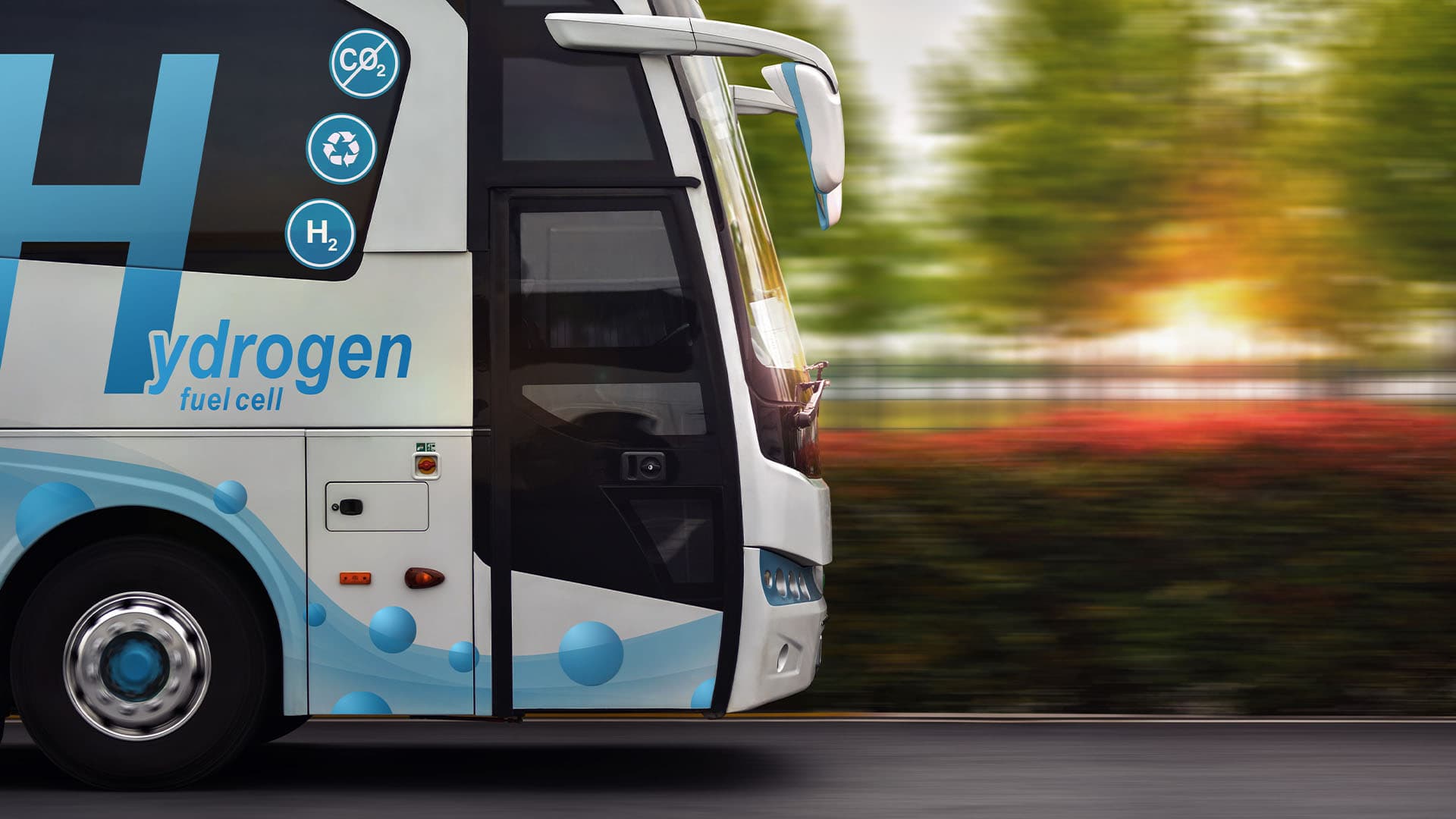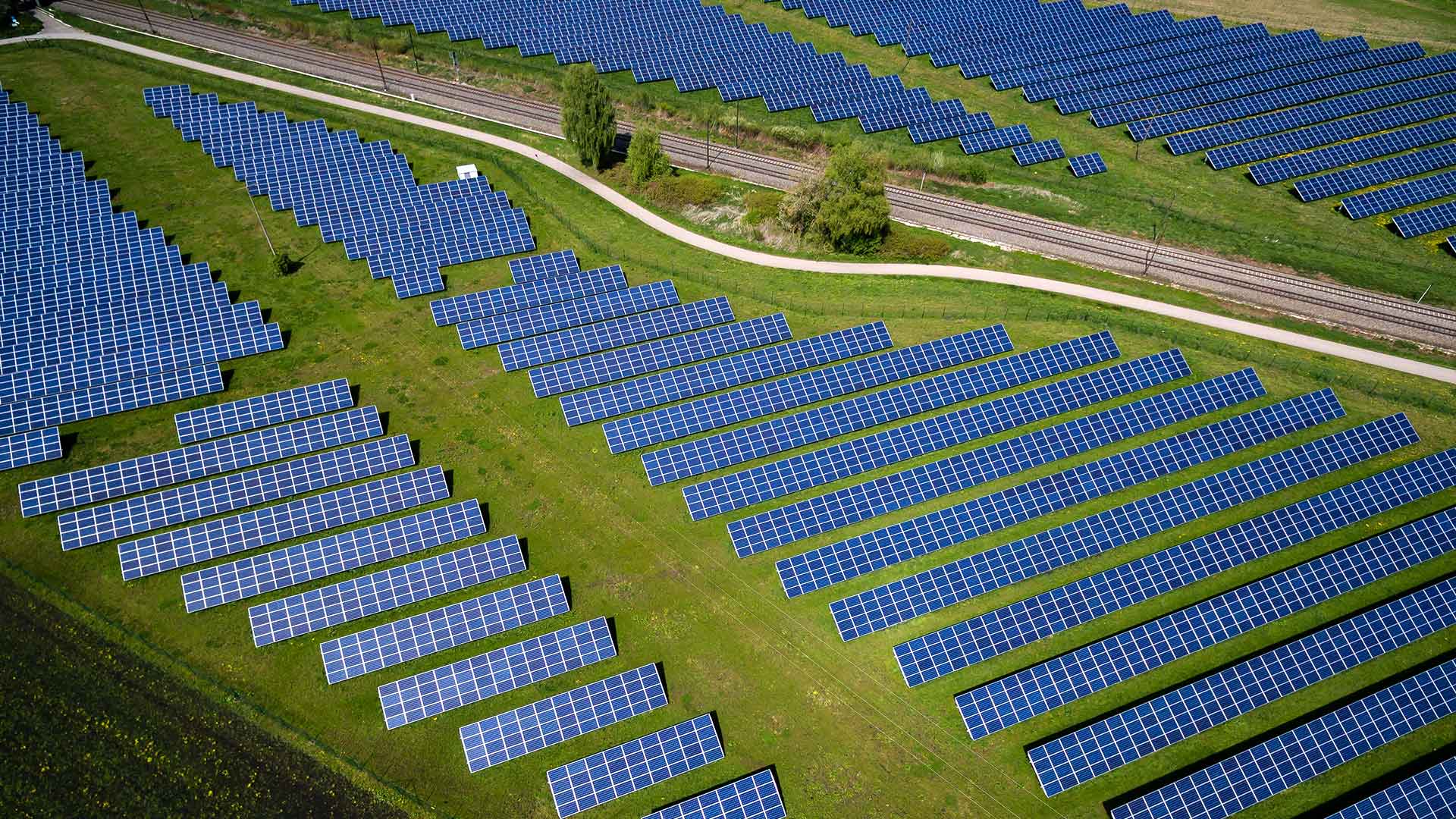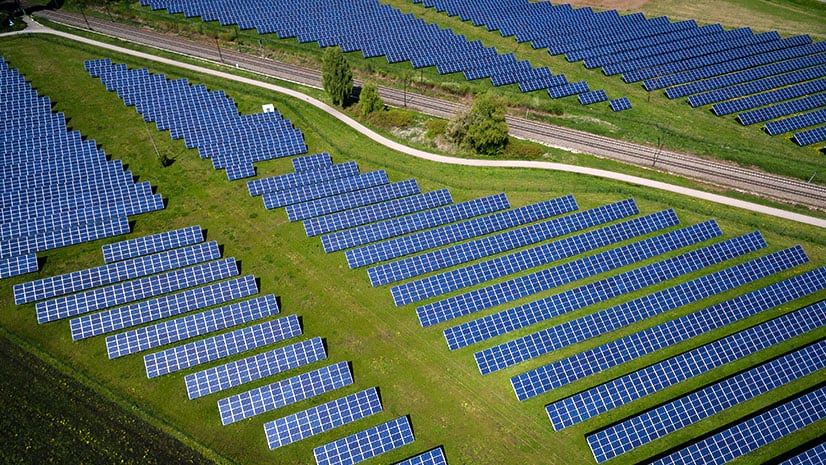As net zero pledges make their way to the top of corporate priority lists, industry leaders are setting their sights on clean-burning hydrogen as a new ally in the decarbonization quest. Today, hydrogen comprises just a small fraction of global energy use, but recent announcements suggest growth. The location technology already used in adjacent industries could accelerate the efficiency needed for hydrogen’s ramp-up.
In June, the United States Department of Energy announced an ambitious goal to expand the hydrogen industry within the next decade—and clean it up, since 95 percent of today’s hydrogen is produced from fossil fuels. (See the sidebar below for distinctions among gray, blue, and green hydrogen.) The announcement echoes similar action around the world, including recent initiatives from a European energy coalition, the Chilean government, and Japanese engineers.
Hydrogen—typically converted to energy through fuel-cell technology—could meet up to 24 percent of the world’s energy needs by 2050, according to a 2020 report from BloombergNEF. But there is much to be done. “Green” hydrogen produced with renewable energy currently accounts for just 0.1 percent of global supply. And it’s expensive, costing up to US$6 per kilogram versus $1–3 per kilogram for conventional hydrogen. To ramp up sustainable production processes, the energy industry needs to quickly make green hydrogen production more cost-efficient. Technologies such as virtual 3D models, analytics tools, and real-time dashboards—all forms of location intelligence—can provide the insight energy companies need to reduce cost and increase production.
Lowering Hydrogen Costs Begins with Location
For hydrogen producers, the cost of going green is largely determined by one essential factor: a hydrogen plant’s location. Green hydrogen can be expensive to produce through renewable energy if input costs are high, and can be expensive to store and transport. Energy companies entering the green hydrogen market must first understand location-based variables such as regional access to renewables, local demand for hydrogen, and nearby infrastructure for hydrogen transport (e.g., shipping versus pipelines).
These variables inform a series of decisions—whether to convert existing plants or construct new ones, which type of renewable energy should power the electrolysis process that produces hydrogen, whether to store and distribute the hydrogen as a gas or a liquid.
As leaders in green hydrogen consider where and how to optimize costs, they can learn from energy companies that have relied on location technology for years. BP, for instance, uses a geographic information system (GIS) for everything from pipeline management to market research. In renewables, Renewable Energy Systems and Norway’s Equinor use GIS for site selection and other critical processes. Henrik Hagness, leading engineer for mapping at Equinor, says spatial intelligence is “needed throughout [the process], from business development and siting to moving ahead with a development project to efficiently maintaining and inspecting the energy assets when in operation.”
In growing industries like green hydrogen, GIS-based smart maps and dashboards can provide single pane of glass visualizations that identify cost-effective options and point toward evidence-based next steps.
Bringing Data Together Drives Smarter Improvements
Once green hydrogen systems are in place, energy companies will need to stay agile, fine-tuning operations and applying efficient processes at scale. Reliable growth is best achieved by equipping executives with a decision support system—a holistic operating picture based on analytics that reveals patterns and outliers and models potential outcomes.
For green hydrogen producers, KPIs may include a plant’s renewable energy consumption rates, local weather patterns, buyer demand, and equipment conditions. For executive-level decisions, these datasets are best viewed together, rather than siloed. For example, comparing weather patterns and buyer demand—an analysis that natural gas operator ONEOK performs with GIS—enables more nuanced decisions about optimal times to run electrolysis.
Location analytics tools combine these pieces of information and identify key connections. Visualizing the data on map-based dashboards shows where even small operational adjustments will have the most impact. Green hydrogen companies may find inspiration in energy firms that have used decision-support technologies like GIS to integrate analytics and visualization and ensure that executives have access to complete, current information.

With more data readily available, energy companies can enhance transparency, speed up reporting processes, and take confident action based on the latest guidelines.
Looking Ahead with Real-Time Awareness
As the green hydrogen industry expands, the demand for day-to-day operational efficiency will increase. Keeping track of equipment maintenance, clean energy certifications, and safety protocols will require a location-based view of assets and activities. For some hydrogen producers, IoT sensors and real-time data feeds will supply accurate and near-real-time information on those conditions and help avoid costly downtime.
Combining that data with maps and dashboards for visualization, companies can even create a digital twin—a virtual model of a facility or supply chain that links information to location, showing executives what’s happening where at any moment.
Recent announcements signal that world leaders will continue to prioritize green hydrogen and other clean energies in decarbonization efforts. Across the energy sector, technology that delivers intuitive access to operational information is already considered an essential business system. Leaders can turn to maps, dashboards, and digital twins populated by real-time data to efficiently manage the production of clean energy, and to see with greater clarity how their organization is realizing a sustainable future.












